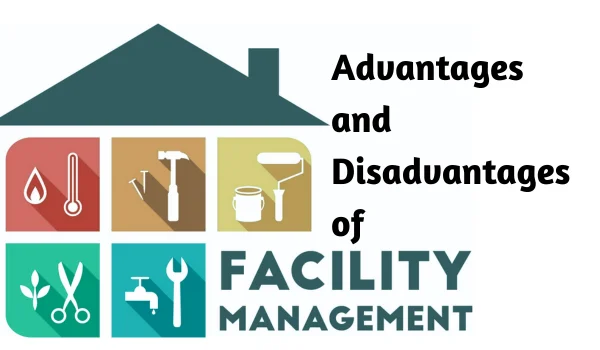Facility management plays a crucial role in ensuring the smooth operation of buildings, infrastructure, and services within organizations. It encompasses a wide range of disciplines, including maintenance, security, cleaning, and space management, to optimize functionality and efficiency. While facility management offers numerous benefits to businesses and organizations, it also has its share of challenges. This article explores the advantages and disadvantages of facility management.
What is Facility Management?
Facility management involves the integration of people, processes, and technologies to maintain and improve the functionality of physical spaces. It ensures that all systems, services, and structures work seamlessly to support the core operations of an organization. This can include office buildings, hospitals, schools, factories, or residential complexes.

Advantages of Facility Management
- Improved Efficiency
Effective facility management ensures that all systems, such as HVAC, lighting, and IT infrastructure, are well-maintained, leading to optimal performance and reduced downtime. - Cost Savings
Through proactive maintenance and energy management, facility management can reduce operational costs. It minimizes unexpected repairs and extends the lifespan of assets. - Enhanced Employee Productivity
A well-managed facility provides a comfortable and safe environment for employees, boosting morale and productivity. - Compliance with Regulations
Facility managers ensure compliance with health, safety, and environmental regulations, reducing the risk of fines or legal complications. - Asset Management
Facility management keeps track of assets, schedules regular maintenance, and optimizes resource allocation, ensuring longevity and efficiency. - Improved Space Utilization
Facility management enables organizations to optimize space usage through effective planning and allocation, reducing waste and maximizing efficiency. - Risk Mitigation
Facility managers identify potential risks, such as fire hazards or security vulnerabilities, and implement measures to mitigate them, ensuring safety and continuity. - Sustainability
Modern facility management emphasizes sustainable practices, including energy efficiency, waste reduction, and the use of eco-friendly materials. - Customer Satisfaction
For businesses that rely on customer visits (e.g., retail stores or hotels), a well-maintained facility improves customer experiences, enhancing satisfaction and loyalty.
Disadvantages of Facility Management
- High Initial Costs
Setting up a robust facility management system, including hiring skilled personnel and investing in technology, can be expensive. - Complexity
Managing large facilities with diverse needs requires expertise and coordination, which can be challenging for organizations without prior experience. - Dependence on Technology
Modern facility management relies heavily on technology, and any technical glitches or failures can disrupt operations. - Time-Consuming
Implementing and maintaining facility management processes can be time-intensive, especially during the initial stages. - Resistance to Change
Employees or management may resist adopting new facility management practices or technologies, hindering their effectiveness. - Risk of Overdependence on Vendors
Outsourcing facility management to external vendors may lead to dependency, making it difficult to switch providers or address issues independently. - Privacy Concerns
Facility management systems, particularly those using advanced surveillance or monitoring tools, can raise privacy concerns among employees and visitors. - Continuous Training Requirements
Facility managers and staff need ongoing training to keep up with advancements in technology and regulations, adding to operational costs. - Environmental Impact
Poorly managed facilities can contribute to resource wastage and environmental degradation, countering sustainability goals.
Comparison Table: Advantages vs. Disadvantages
| Advantages | Disadvantages |
|---|---|
| Improved operational efficiency | High initial setup costs |
| Reduced operational costs through maintenance | Complexity in managing large facilities |
| Boosts employee productivity | Heavy reliance on technology |
| Ensures compliance with regulations | Time-consuming to implement |
| Optimizes asset usage and longevity | Resistance to change within the organization |
| Enhances space utilization | Risk of overdependence on vendors |
| Mitigates risks and ensures safety | Privacy concerns due to monitoring systems |
| Promotes sustainability | Continuous training requirements |
| Improves customer satisfaction | Potential environmental impact if poorly managed |
Key Components of Facility Management
- Maintenance and Repairs: Ensures that infrastructure and equipment are functional and efficient.
- Security and Safety: Manages access control, surveillance, and emergency preparedness.
- Energy Management: Optimizes energy consumption for cost savings and sustainability.
- Space Management: Allocates and utilizes space effectively to meet organizational needs.
- Compliance Management: Adheres to legal, health, and environmental standards.
- Technology Integration: Uses advanced tools like Building Management Systems (BMS) to monitor and manage facilities.
How Facility Management Impacts Businesses
- Operational Continuity: By addressing issues proactively, facility management minimizes disruptions, ensuring seamless operations.
- Brand Image: A clean, safe, and well-maintained facility reflects positively on an organization, improving its reputation.
- Employee Retention: A comfortable and functional workspace enhances job satisfaction and reduces employee turnover.
- Long-Term Savings: Proper asset and energy management lead to significant savings over time.
Conclusion
Facility management is an indispensable part of modern organizations, ensuring the efficient operation and maintenance of physical spaces. Its advantages, such as cost savings, risk mitigation, and improved productivity, make it a valuable investment. However, challenges such as high initial costs, complexity, and reliance on technology must be carefully managed to fully realize its benefits.
By leveraging best practices, training personnel, and adopting advanced technologies, businesses can optimize their facility management processes. Ultimately, a well-executed facility management strategy contributes to the long-term success and sustainability of an organization.

Hello, I’m Kapil Kumar, a seasoned SEO expert and blogger at WinnersList.in. My mission is to spotlight exceptional individuals and organizations across various domains. Through curated lists, profiles, and inspiring stories, I aim to celebrate outstanding achievements and inspire the next generation of champions. Join me in this journey.
